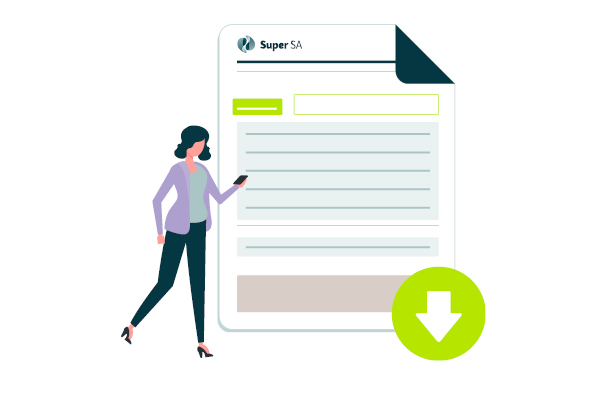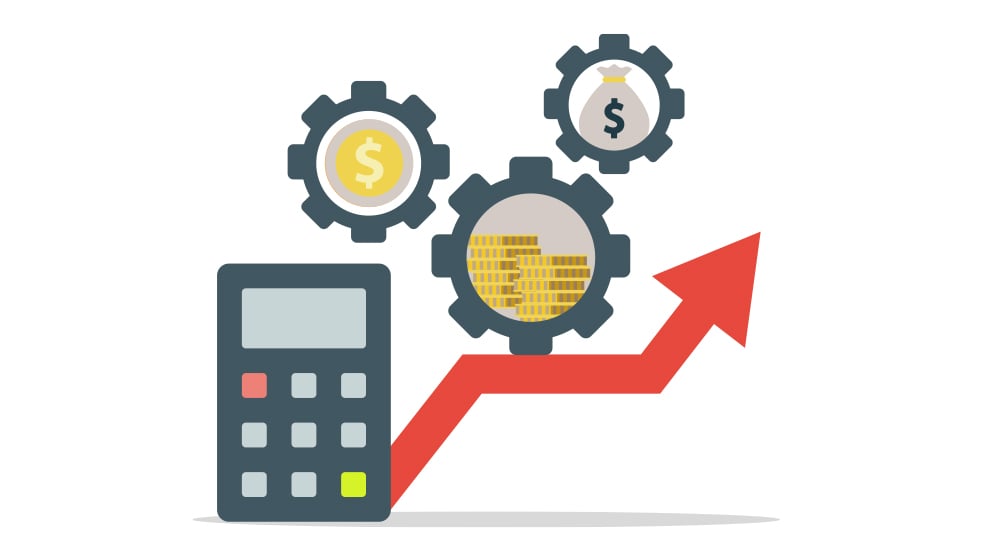Salary sacrifice
Salary sacrifice
Section Heading
Turbo-boost your super through salary sacrifice.
By salary sacrificing before tax, you could:
 Lower your income tax
Lower your income tax
Generally, salary sacrifice contributions are taxed at 15% when contributions are paid into your super account, which may be lower than your marginal tax rate. It also reduces your taxable income, as salary sacrifice contributions are deducted from your before-tax salary.
 Save more in super
Save more in super
With a salary sacrifice agreement in place, you will be saving more for retirement, which will be compounding over time. This could allow you to arrive at a financially sound place, sooner than later. When you’re ready to retire and live your best life, you’ll be better prepared financially.
 Take advantage of no annual cap1
Take advantage of no annual cap1
With Triple S, members can take advantage of the rare benefit we offer which allows you to contribute much more to your super each year. With most super funds, an annual contribution cap of $30,000 applies. However Triple S members have a lifetime cap, but no annual cap1. This is a great way to turbo-boost your super as you’re nearing retirement.
Section Heading
How to set up your salary sacrifice
Setting up your salary sacrifice through Super SA is a quick and easy three step process.
Step 1: Fill in the Salary Sacrifice form
Want to salary sacrifice directly to Super SA? Decide on a set dollar amount or percentage to salary sacrifice. Filling in the form is easy.
Step 2: Give the completed form to your employer or HR delegate
If you’re not sure who to give the form, just ask your immediate manager. They should know where the form needs to go.
Step 3: Your employer or HR delegate will complete the employer declaration for you
After you’ve given the form to your employer or HR delegate, the employer declaration, section 5, will be filled in by your employer or HR delegate. They’ll also hand the completed form to your agency's payroll to process. Shared Services or Payroll will action the completed form and they’ll adjust your salary as per your instructions in the form.
Section Heading
Save now, spend later
The following case studies show the long-term benefits of boosting your super.
Charlie is saving enough for an ocean cruise and more in retirement.2
He is 55 and works in health care. He earns $120,000 per year and is planning to retire at age 67.
He has just started to help it grow with salary sacrifice contributions of $600 per fortnight. That means he is on track to have an extra $173,487 in his super to spend on an ocean cruise and more when he retires at age 67.
| No salary sacrifice | With salary sacrifice contribution $600 per fortnight | |
| Take home pay fortnight | $3,493 | $3,085 |
As a result Charlie:
- Pays $4,992 less in Income Tax per year
- Reduces his take home pay by only $408 per fortnight
- Has $173,487 more in his Super at age 67

To learn more about growing your super, book a free webinar or seminar. If you are looking for more information on how these contributions are taxed, refer to the Triple S reference guide.
The "extra in your super at age 67" has been calculated based on the following assumptions and rules of the Triple S Scheme as follows:
- Superannuation balance of $250,000
- Default employer Super Guarantee contributions of 12%
- Salary is excluding Super Guarantee
- Investment rate of return of 5% per annum
- Price inflation rate of 2% per annum and a salary inflation rate of 3.2% per annum
- Insurance premiums of $300 per annum
- Administration fees have been calculated at $70.20 per year plus 0.05% of the account balance (capped at $325 per year).
This calculation estimates an amount payable at a future time and has been adjusted to include price inflation to assume changes in the cost of living.
Sarah is saving enough to do more travelling in retirement.3
She is 40 and is a teacher. She earns $82,000 per year and is planning to retire at age 67.
She has just started to help it grow with salary sacrifice contributions of $40 per fortnight. That means she is on track to have an extra $29,060 in her super to do more travelling when she retires at age 67.
| No salary sacrifice | With salary sacrifice contribution $40 per fortnight | |
| Take home pay fortnight | $2,499 | $2,472 |
As a result Sarah:
- Pays $333 less in Income Tax per year
- Reduces her take home pay by only $27 per fortnight
- Has $29,060 more in her Super at age 67

To learn more about growing your super, book a free webinar or seminar. If you are looking for more information on how these contributions are taxed, refer to the Triple S reference guide.
The "extra in your super at age 67" has been calculated based on the following assumptions and rules of the Triple S Scheme as follows:
- Superannuation balance of $100,000
- Default employer Super Guarantee contributions of 12%
- Salary is excluding Super Guarantee
- Investment rate of return of 5% per annum
- Price inflation rate of 2% per annum and a salary inflation rate of 3.2% per annum
- Insurance premiums of $300 per annum
- Administration fees have been calculated at $70.20 per year plus 0.05% of the account balance (capped at $325 per year).
This calculation estimates an amount payable at a future time and has been adjusted to include price inflation to assume changes in the cost of living.
Sam is saving enough for a round-the-world trip in retirement.4
She is 26 and works in health care. She earns $66,000 per year and is planning to retire at age 67.
She has just started to help it grow with salary sacrifice contributions of $30 per fortnight. That means she is on track to have an extra $36,816 in her super to spend on a round-the-world trip when she retires at age 67.
| No Salary Sacrifice | With salary sacrifice contribution $30 per fortnight | |
| Take home pay fortnight | $2,080 | $2,060 |
As a result Sam:
-
- Pays $250 less in Income Tax per year
- Reduces her take home pay by only $20 per fortnight
- Has $36,816 more in her Super at age 67

The "extra in your super at age 67" has been calculated based on the following assumptions and rules of the Triple S Scheme as follows:
- Superannuation balance of $20,000
- Default employer Super Guarantee contributions of 12%
- Salary is excluding Super Guarantee
- Investment rate of return of 5% per annum
- Price inflation rate of 2% per annum and a salary inflation rate of 3.2% per annum
- Insurance premiums of $300 per annum
- Administration fees have been calculated at $70.20 per year plus 0.05% of the account balance (capped at $325 per year).
This calculation estimates an amount payable at a future time and has been adjusted to include price inflation to assume changes in the cost of living.
Section Heading
What you need to consider
There are caps on the amount you can contribute into your super which vary by scheme. Read on to learn more about concessional contributions cap limits and tax implications.
What’s the benefit of no annual salary sacrifice contribution cap?1
There's different caps that apply to how much you can salary sacrifice into Triple S.
Rather than concessional contributions being subject to an annual cap (currently $30,000), you are subject to a lifetime cap ($1.865 million - for the 2025/26 financial year) in Triple S. If you also receive concessional contributions in a taxed fund, any concessional contributions made to Triple S will be counted towards your annual concessional contributions cap.
Refer to the Triple S Product Disclosure Statement and Reference Guide for further information.
With this benefit, you could significantly increase the amount you've saved in superannuation through compounding returns over a long period of time.
What’s the benefit of untaxed contributions with Triple S?
If you salary sacrifice into the Triple S scheme, rather than paying 15% tax up front on your contributions, tax is deducted when you withdraw from the fund in accordance with the Australian Taxation Office rules for untaxed funds. Unlike other super funds, this allows your super to grow over time with your untaxed dollars.
This is subject to applicable tax rates, which will depend on whether you roll over, or if you cash out, and will also depend on your commonwealth preservation age. Further information about is available in the Triple S Reference Guide.
If the sum of your income and relevant concessionally taxed contributions is over $250,000 per year, you'll be taxed at 15% of your relevant concessional contributions above the $250,000 threshold. You'll receive notification from the Australian Taxation Office (ATO) advising you of the amount payable and your payment options. More information is available in the Super SA Division 293 Tax fact sheet and on the ATO website.
-
If I salary sacrifice am I eligible for a Commonwealth Government Co-contribution?
If you’re salary sacrificing, you’re agreeing to a before-tax (concessional) contribution and this will not count toward the eligibility for a Commonwealth Government Co-Contribution.
You are only eligible for a Commonwealth Government Co-Contribution through voluntary after-tax contributions and if you meet the eligibility criteria. More Commonwealth Government Co-Contribution information is available in your schemes Product Disclosure Statement (which can be found here).
-
Will my salary sacrifice contributions count towards the First Home Super Saver (FHSS) Scheme?
Any contributions you make to your Triple S account, including any rollovers into the account, will not count towards the FHSS Scheme. Triple S is an untaxed fund and is therefore specifically excluded under Commonwealth rules.
-
What if I salary sacrifice into Super SA Select?
If you’re in the Super SA Select scheme, any concessional contributions (including salary sacrifice and employer contributions) are taxed at a rate of 15% when they’re made by your employer. More information is available in the Super SA Select Reference Guide and on the ATO website. If you have a Super SA Select account, you have a concessional contributions cap that applies (currently $30,000 per financial year), this includes any employer and salary sacrifice contributions. Refer to the Super SA Select Product Disclosure Statement and Reference Guide for further information.
If the sum of your income and relevant concessionally taxed contributions is over $250,000 per year, you’ll be taxed an additional 15% tax on your relevant concessional contributions above the $250,000 threshold. You’ll receive notification from the Australian Taxation Office (ATO) advising you of the amount payable and your payment options. More information is available in the Super SA Division 293 Tax Fact Sheet and the ATO website for further information.
-
What happens if I change departments in the SA public sector or switch employers?
Not everyone knows that salary sacrifice ends when you change jobs. Salary sacrifice into super is an arrangement you establish with your employer. When you change departments in the SA public sector or switch employers, the arrangement usually ends.
If your salary sacrifice arrangement ends, it’s easy to set up a new one. Simply fill in the form and give it to your new HR delegate or employer.
Section Heading
Want to know more?
Section Heading
1 A lifetime untaxed plan cap currently $1.865m for the 2025/26 financial year applies. Refer to the Triple S Product Disclosure Statement for further information. If you also receive concessional contributions in a taxed fund, any concessional contributions made to Triple S will be counted towards your annual concessional contributions cap.
2 By contributing $600 per fortnight you could have $173,487 more at retirement, which could pay for an ocean cruise and more when you retire.
3 By contributing $40 per fortnight you could have $29,060 more at retirement to do more travelling when you retire.
4 By contributing $30 per fortnight you could have $36,816 more at retirement, which could pay for a round-the-world when you retire.





